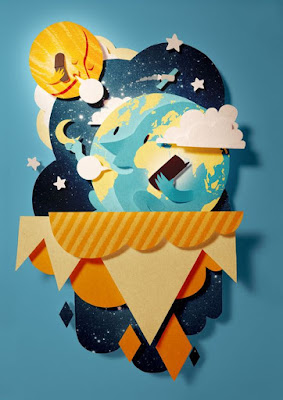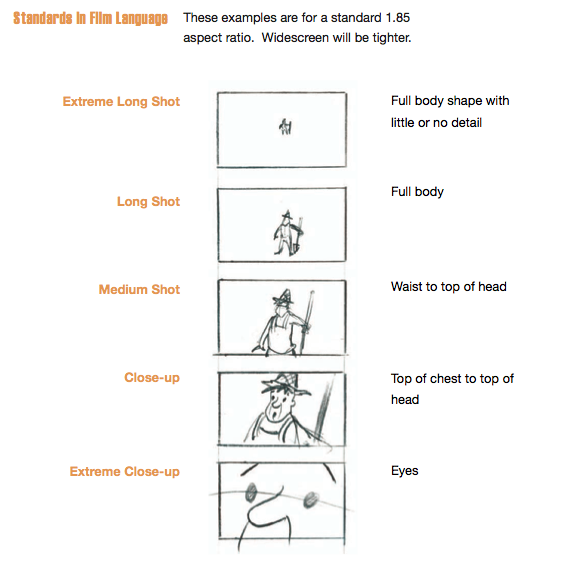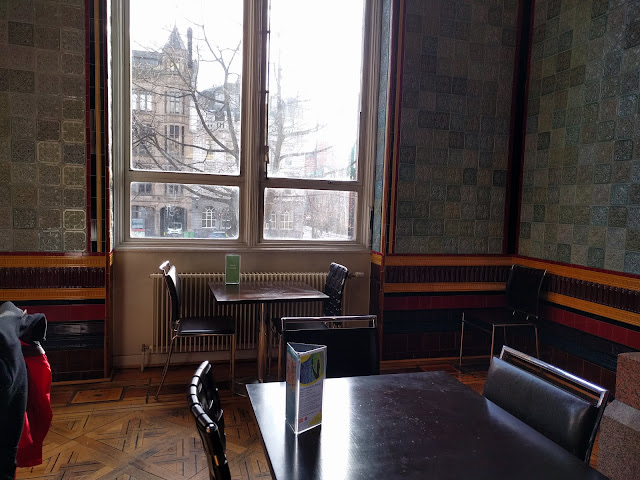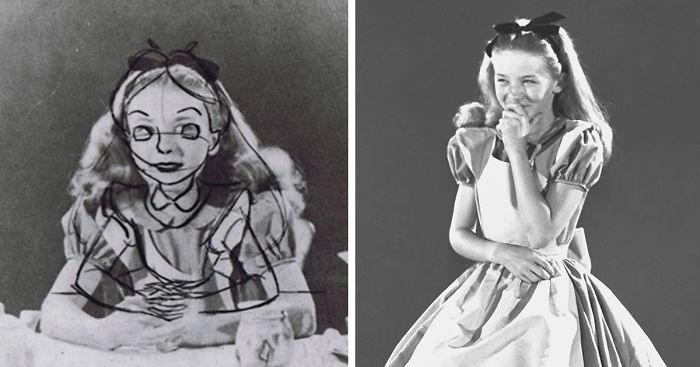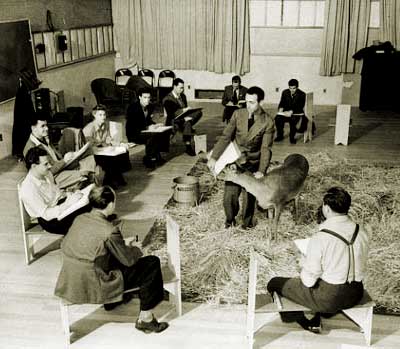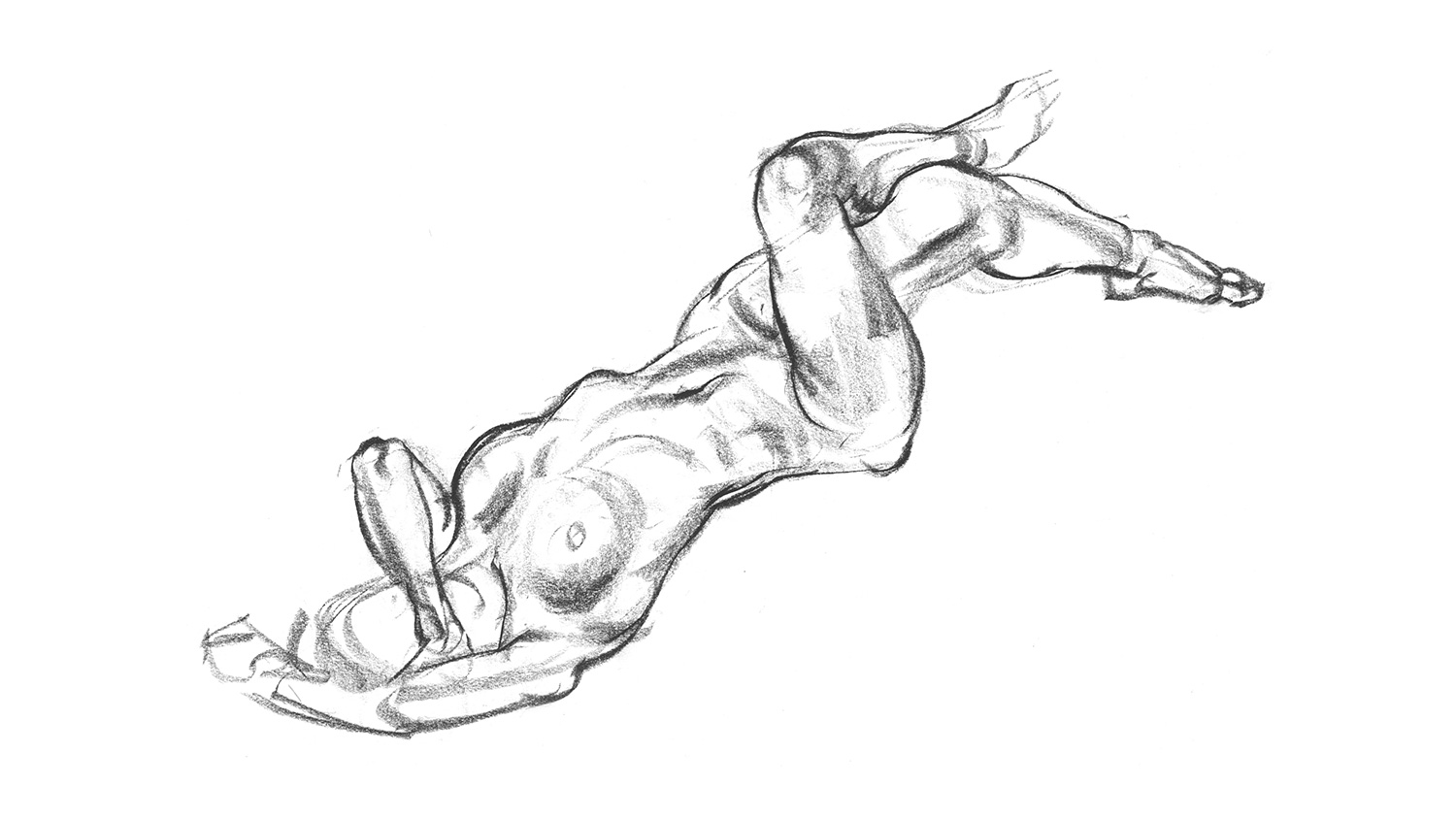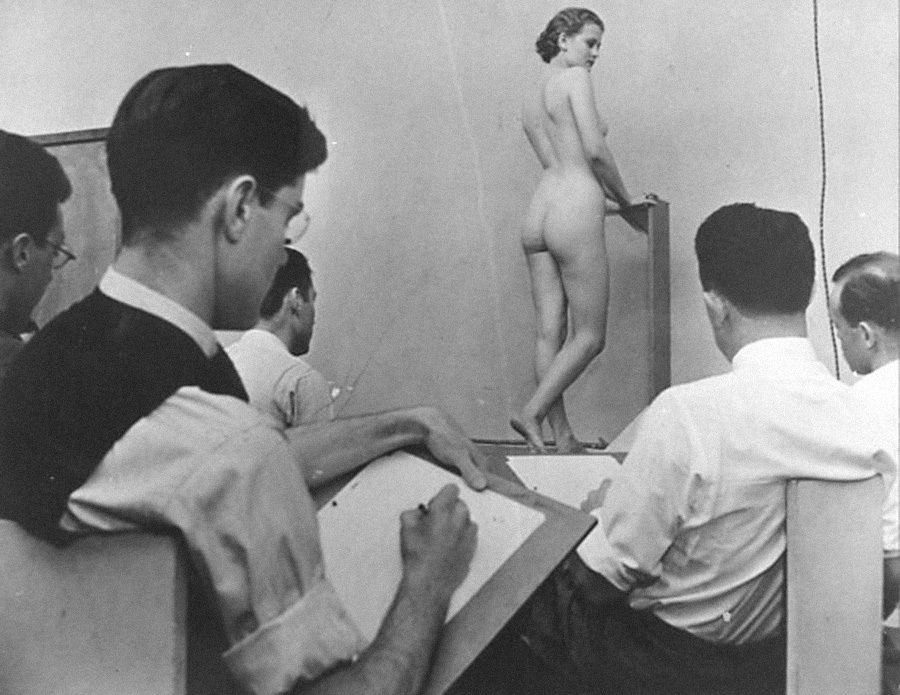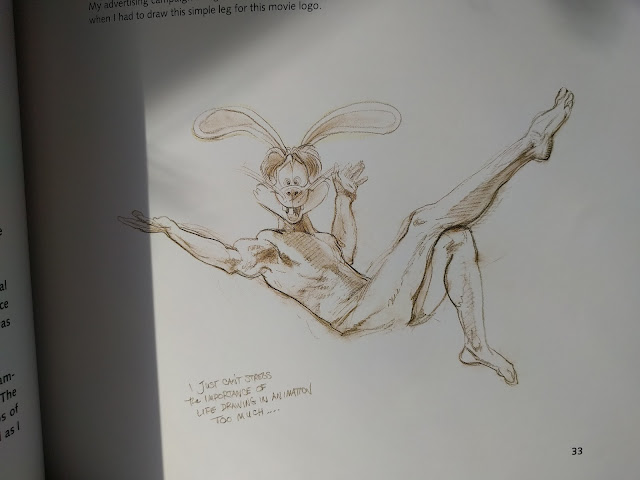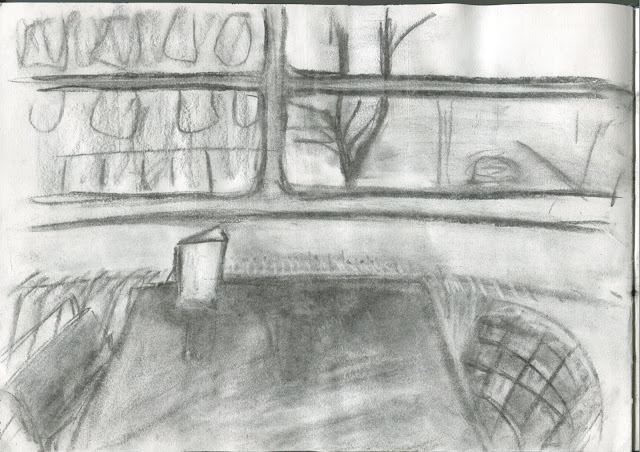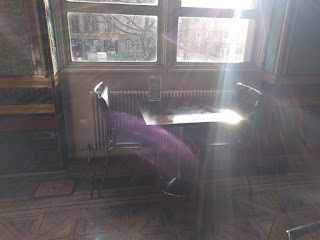When going to my locations for environmental storytelling I did little sketches here and there of small details for practice and so that I could get a better feel for the places. I liked to draw the little details much better than a big collective drawing as I was able to capture more detail instead of focusing a lot on the perspective. I found it very useful when looking back through my sketches to look at these thumbnails as they told my things that my initial drawings might have missed. So, from this I have learnt that it's good if I am recording a place to do little sketches for better reference and in the future if I do this kind of thing again I think I will record even more thumbnails. I didn't record as many as I would have liked but at the time I didn't realise how important and useful they were. So, below are some of the little sketches I have pulled from my sketchbook, and even though they are quite rough I was still able to capture quite a lot of little details.

This is of the ceiling in the art gallery cafe and it was covered in hexagons so I have documented that clearly here.
This is a little drawing from the Nelson Mandela garden and even though I didn't capture the flowers in my larger drawings it was nice to have this little detail of what the flowers looked like at the time.
This was a detail found on one of the walls of the Leeds Art Gallery Cafe and by recording things like this it allows me to put more detail in later if I wish. For example, if I were to draw the location again for animation purposes I could include this on one of the walls even without it being on that specific wall in real life.
Finally, this last sketch I'm going to show is of a little door at the side of Leeds Civic Hall and I just liked the look of it. Again in animation I could use this door in my narrative even if I were to use a different environment.
 I was originally going to create my ident by using real-life stop motion cut out animation, however I also wanted to do something that would be time efficient and that I could work on from home. So, I decided that I was going to look at After Effects as the program I want to use to create my E4 ident. I don't have much experience with After Effects, however I am quite used to using key frames in Premiere Pro so I felt that I would be able to get a hang of it easily. I have started looking at online tutorials and ways to create realistic cut out animation digitally, and it seems quite simple and still looks believable. I think that I am going to use construction paper scans that I find online and then use them in Photoshop to cut out all of my different shapes needed. This way it will look like real materials instead of looking completely flat. Below are a few examples of cut out art that I liked and decided to look at for my own inspiration. These examples are extremely detailed, however it inspires me to think about the further possibilities I could create using this method and how complicated they can become with practice!
I was originally going to create my ident by using real-life stop motion cut out animation, however I also wanted to do something that would be time efficient and that I could work on from home. So, I decided that I was going to look at After Effects as the program I want to use to create my E4 ident. I don't have much experience with After Effects, however I am quite used to using key frames in Premiere Pro so I felt that I would be able to get a hang of it easily. I have started looking at online tutorials and ways to create realistic cut out animation digitally, and it seems quite simple and still looks believable. I think that I am going to use construction paper scans that I find online and then use them in Photoshop to cut out all of my different shapes needed. This way it will look like real materials instead of looking completely flat. Below are a few examples of cut out art that I liked and decided to look at for my own inspiration. These examples are extremely detailed, however it inspires me to think about the further possibilities I could create using this method and how complicated they can become with practice!